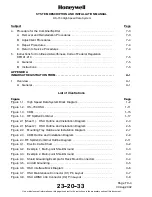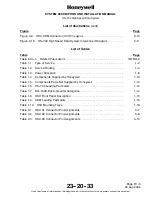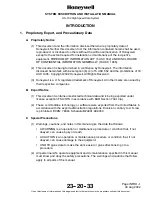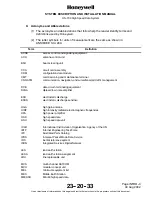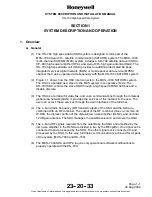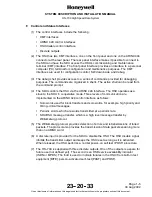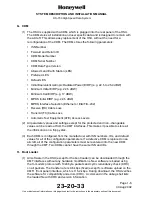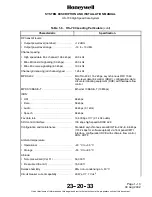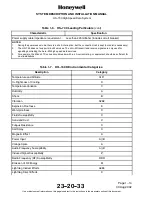
SYSTEM DESCRIPTION AND INSTALLATION MANUAL
HS--700 High Speed Data System
23--20--33
30 Aug 2002
Use or disclosure of information on this page is subject to the restrictions in the proprietary notice of this document.
Page 1--8
K. Power Management
(1) General
(a) The HPA is shared between the SDU and the HSU. The HSU has to cooperate
with the SDU regarding the use of the shared HPA.
(2) Power Allocation
(a) The output power of the HPA is a limited resource. The SDU is responsible for
the management of this resource. The HSU must request that the SDU allocate
power before it can start a transmission. Depending on the channel mode
(Table 1-3), the HSU asks the SDU to allocate the required amount of power
before using the channel. For burst mode channels such as MPDS, a fixed
power allocation is assumed. If sufficient power is granted, the SDU informs the
HSU what backoff from 12 dBm will generate the requested power, and then the
HSU can initiate the transmission. The HSU indicates to the SDU what is the
lowest amount of power that the SDU can allocate to initiate a call before the call
setup is rejected.
(b) In the single carrier per channel (SCPC) and MPDS modes, the HSU may
operate in either nominal power mode (25 dBW) or economy mode (less than 25
dBW) depending on a setting in the CDM. When the power control protocol of
the LES reduces or increases the EIRP of the HSU, the HSU gives the SDU the
new EIRP level. The HSU also waits for the SDU to indicate what power is
available and what the HSU backoff level should be. If the HSU receives a lower
power allocation than it requested, it operates the channel until the channel
naturally terminates or the power is less than the Inmarsat minimum requirement
of 17 dBW.
(c) An SDU owner requirements table (ORT) item governs the minimum power that
the SDU will allocate for the HS--700, even when the HS--700 indicates a lower
current power requirement due to ongoing dynamic power control commands
from the ground station. This allows for more stability of both Aero--H/H+ and
HSD calls, for example, fewer incidents of calls being terminated (shortly after
being established) due to changing power requirements.
Table 1-3. Power Allocation
Channel Mode
Power Required
Time Division Multiplex (TDM) (Signaling)
14 dBW
SCPC (Circuit--Mode)
As defined in the CDM (nominally 25 dBW)
MPDS (Packet--Mode)
As defined in the CDM (nominally 25 dBW)

